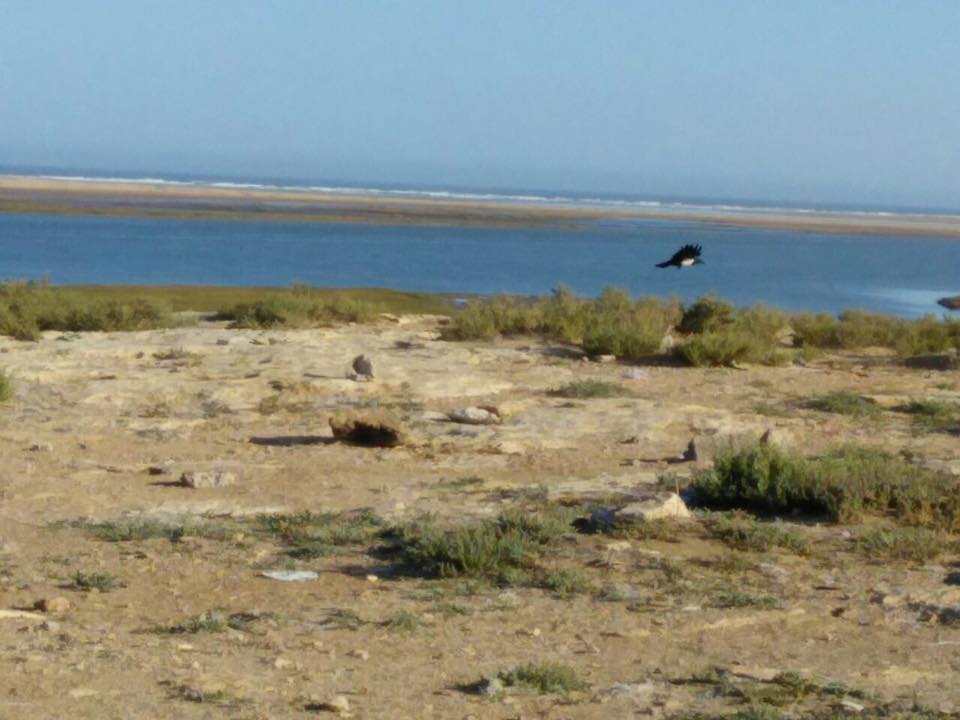A Pied Crow (Corvus albus) observed at 21 km north-east of Tarfaya on 9 January by Abdeljebbar Qninba, Abdeslam Rihane and their colleagues (photo 1).
Today (23 Jan), a Pied Crow observed at Khnifiss Lagoon (exactly near Auberge Khnifiss) by Imad Cherkaoui and Leabid Ayach (photos 2 & 3). Probably the same bird observed north-east of Tarfaya two weeks ago.
Also, the long-staying Pied Crow at Mhamid was still there yesterday (22 Jan.), it was observed by Brahim Bakass at the abattoir of the souk this time.



Pied Crow at Mhamid was still there on the 9th February 2017, it was observed by Mario Camici, Hans-Ulrich Grütter, Markus Mosimann and Jürg Hofstetter from Switzerland at the abattoir of the souk this time.
We had also an observation of 6 Barbary Sheep (Ammotragus lervia) in the Todgha Valley on the 13th of February 2017. I mean, it’s an extremely rare mammal species in Morocco?
Thanks Mario for the comment and the email (I will repost here the answer regarding the status of the Barbary sheep in Morocco).
Congratulations for the Pied Crow and for the birding in general.
The Barbary sheep is still present in Morocco in the wild although the population has strongly declined. Its current distribution range extends from north-east Morocco to Lower Draa valley, plus a small and isolated population in Oued Dahab region in the south. However, the bulk of the population lives in the High Atlas. Here is an extract from a paper by Aulagnier et al (2015) about “Mammals of Morocco: extinctions and declines during the XXth century”:
The game enclosures mentioned above are located at Tazekka National Park (Middle Atlas) and at Tafoughalt (Oriental region), and hold only a small population. In comparison, the wild population is much bigger and was estimated to number between 800 and 2000 animals in 2006 (in Aulagnier et al 2015).
Reference:
Aulagnier, S., Bayed, A., Cuzin, F. & Thevenot, M. 2015. Mammifères du Maroc : extinctions et régressions au cours du XXème siècle. Travaux de l’Institut Scientifique, Série Générale, N° 8: 53-67.
Your observation at Todgha valley is located at the eastern limit of the main range of the population. It’s a good one given the number involved.
Best regards,
Mohamed